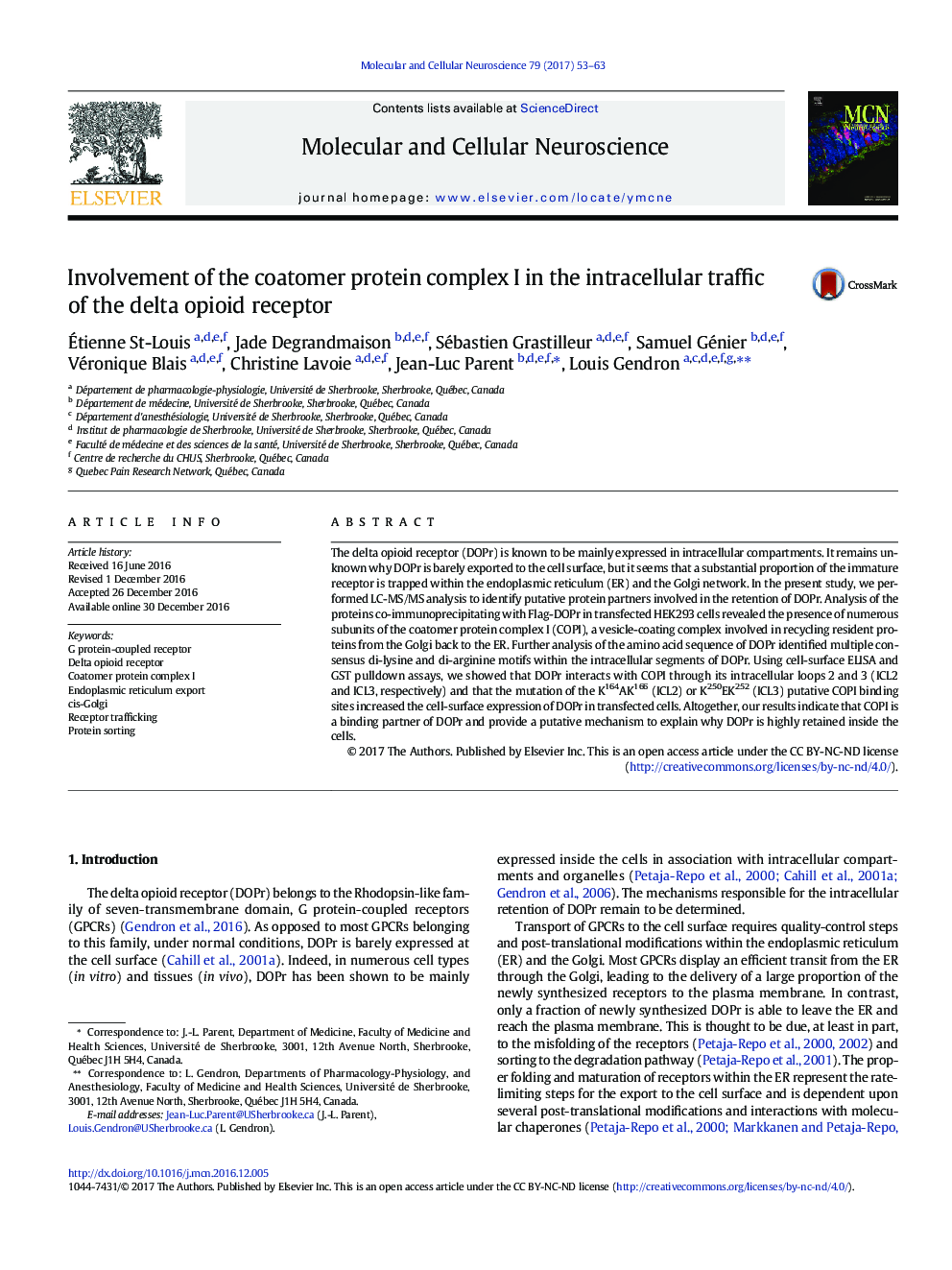| Article ID | Journal | Published Year | Pages | File Type |
|---|---|---|---|---|
| 5534434 | Molecular and Cellular Neuroscience | 2017 | 11 Pages |
â¢DOPr colocalizes with β-COP in the Golgi.â¢COPI interacts with DOPr.â¢Retention of DOPr in the Golgi and the ER is regulated by COPI.â¢Di-lysine binding motifs within the second and third intracellular loops of DOPr are involved in the interaction with COPI.
The delta opioid receptor (DOPr) is known to be mainly expressed in intracellular compartments. It remains unknown why DOPr is barely exported to the cell surface, but it seems that a substantial proportion of the immature receptor is trapped within the endoplasmic reticulum (ER) and the Golgi network. In the present study, we performed LC-MS/MS analysis to identify putative protein partners involved in the retention of DOPr. Analysis of the proteins co-immunoprecipitating with Flag-DOPr in transfected HEK293 cells revealed the presence of numerous subunits of the coatomer protein complex I (COPI), a vesicle-coating complex involved in recycling resident proteins from the Golgi back to the ER. Further analysis of the amino acid sequence of DOPr identified multiple consensus di-lysine and di-arginine motifs within the intracellular segments of DOPr. Using cell-surface ELISA and GST pulldown assays, we showed that DOPr interacts with COPI through its intracellular loops 2 and 3 (ICL2 and ICL3, respectively) and that the mutation of the K164AK166 (ICL2) or K250EK252 (ICL3) putative COPI binding sites increased the cell-surface expression of DOPr in transfected cells. Altogether, our results indicate that COPI is a binding partner of DOPr and provide a putative mechanism to explain why DOPr is highly retained inside the cells.
